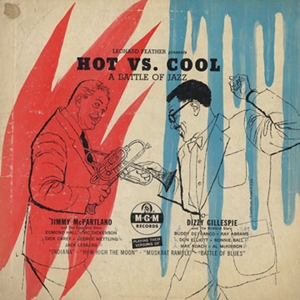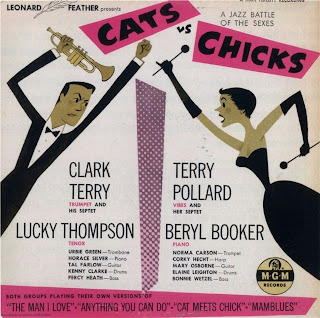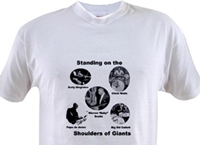The album is a compilation titled Hot vs Cool - Cats vs Chicks

Leonard Feather - critic, composer and pianist - was behind the two albums that comprise this compilation. The first half was originally issued in 1952 as MGM E194, Hot Vs. Cool. The other half was issued in 1954 as MGM E255, Leonard Feather Presents Cats Vs Chicks: A Jazz Battle of the Sexes
Tracks 1 through 8, Hot Vs. Cool, pit traditional jazz against bebop. Put into context, jazz itself was on the verge of imploding during the period in which these tracks were recorded. Actually, it came to a head in the late 1940s, but the battle was still hot in the early 1950s when a group of musicians and their fans doggedly held on to the older style. They were termed 'moldy figs' by the bebop musicians who did not enjoy the same wide fan base because their music was more for musicians than average listeners. Feather was more biased toward that group.

This album, then, was meant to contrast the two styles more than compare them. The traditional musicians were led by cornetist Jimmy McPartland, and included Vic Dickenson on trombone, Edmond Hall on clarinet, Dick Cary on both piano and trumpet, Jack Lesberg on bass and George Wettling on drums.
The bebop musicians were led by Dizzy Gillespie on trumpet, multi-instrumentalist Don Elliott on mellophone and trumpet, Buddy DeFranco on clarinet, Ray Abrams on tenor saxophone, Ronnie Ball on piano, Al McKibbon on bass and Max Roach on drums.
Regretfully I do not have clips for these tracks, so I will give you my highly subjective take on this part of the album: the contrast, as expected, between the two styles on the same songs is significant. None of the tracks on either side of the musical divide are remarkable by today's standards, although as a drummer I enjoyed contrasting Max Roach's approach to George Wettling's playing. In Max you can clearly hear strong influences of Kenny Clarke and a lot of Papa Jo Jones. Wettling's playing is practically a clone of Baby Dodds. I could not help thinking that Buddy DeFranco would have been better suited to McPartland's ensemble or dropped altogether from Dizzy's bebop group. Buddy was one of the great clarinetists, but his style was more traditional than bebop.
While the first eight tracks contrasted two approaches to the came songs, tracks 9-14 compared the musical skills of male and female ensembles playing the same songs. These tracks are from Leonard Feather Presents Cats Vs Chicks: A Jazz Battle of the Sexes. The male group was comprised of some of the biggest names both then and now: Clark Terry on trumpet, Urbie Green on trombone, Lucky Thompson on tenor sax, Horace Silver on piano, Tal Farlow on guitar, Oscar Pettiford and Percy Heath swapping off on bass, and Kenny Clarke on drums.

The women were members of the Terry Pollard Septet, comprised of Norma Carson on trumpet, Beryl Booker on piano, Terry Pollard on vibraphone, Corky Hale (born Merrilyn Hecht) on harp, Mary Osborne on guitar, Bonnie Wetzel on bass and Elaine Leighton on drums.
At first glance one would think this was a lopsided comparison that pitted world class male musicians against a group of unknown women. That would be a mistake because Mary Osborne was a renowned, world class guitarist. Terry Pollard was easily the equal of any male pianist or vibraphonist (she was a master of both instruments), who bested the great Terry Gibbs in many vibraphone duels when she was with his band as a pianist. See this post for Terry in action. Norma Carson was no slouch on trumpet either, giving Terry Clark a run for his money on every track.
Hot vs. Cool tracks were interesting. Cats vs. Chicks tracks, though, were white hot and full of energy and amazing musicianship on both sides of the divide. The final track - Anything You Can Do I Can Do Better - is the highlight of this entire album and my personal favorite track. Here is a clip of that track to show why I say this:
It pits Norma Carson against Clark Terry, Mary Osborne against Tal Farlow, and Terry Pollard against Horace Silver. Personally, I think the women smoked the guys here and I am not saying this to be politically correct. I honestly believe that assertion.
Granted, this is a niche compilation that is comprised of albums that were probably intended to be novelties when first released. However, it is also an excellent contrast of two musical styles in the first eight tracks, and a comparison of world class musicians of both genders on the remaining tracks.



No comments:
Post a Comment